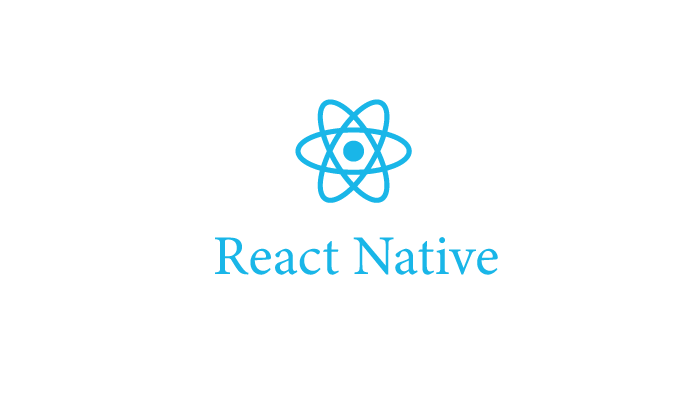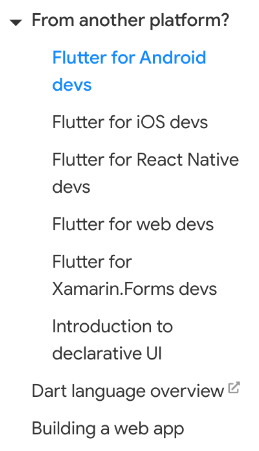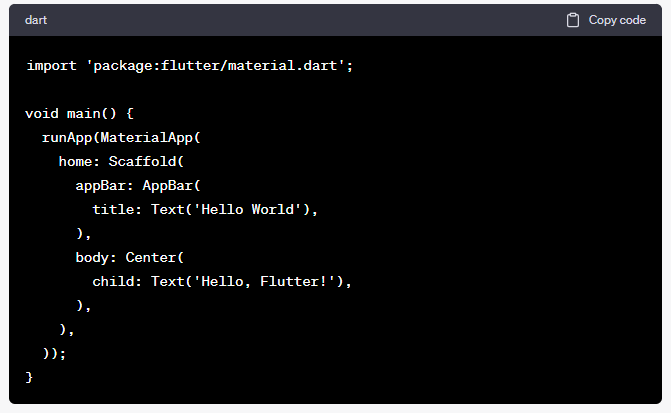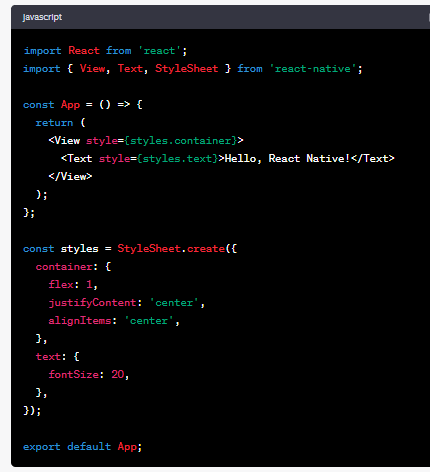In the world of web development - Flutter vs. React Native choosing between two popular frameworks can be daunting. There are over 5.22 Bn people worldwide, that represent 66% of the global population. This means there is room for new mobile app creation in 2023.42% with developers choosing React Native to build apps.
So why these platforms are popular- Simply, Native apps work better on mobile devices and it’s the cheapest and fastest way to build react native app
Most businesses look for technologies that help them in developing cross-platform mobile applications. That’s when the war started, which is better React native vs. Flutter?
In this blog, we will find the answer to this question. Let’s move forward with the blog.
Flutter Vs. React Native Statistics
When it comes to the battle between Flutter Vs. React Native. A look at the Statista survey made with almost 20,000 respondents. Flutter is ahead with React Native. Flutter is the leading cross-platform mobile app development framework for 2021.

However, flutter has been growing steadily in popularity since its release in 2017. It has a strong presence on GitHub, with over 132k stars on its official repository.
Plus, it gained traction in terms of job demand, with an increasing number of companies seeking Flutter developers.
Whereas, React Native has a mature and extensive ecosystem and has 94k stars on GitHub.
Flutter

Flutter is an open-source, software development kit (SDK) created by Google & released in 2017. Build high-performance, high-fidelity apps for mobile, desktop, and web platforms. By using a single codebase.
Plus, Flutter development uses Dart programming language and includes a wide range of pre-built widgets, tools, and libraries. Since it gains popularity among developers due to its unique features and benefits.
Although Flutter was primarily designed for native mobile app development, the recent release of Flutter 2. Many developers think it is flutter good for web development.
Yes, but not good as Native.
The key advantages of Flutter include:
- It can create high-performance apps that run seamlessly across multiple platforms.
- With Flutter app development developers easily build apps for Android, iOS, Windows, and macOS by using a single codebase.
- Less time is required to maintain the apps on other platforms.
- Access to hardware offers a range of plugins and APIs
- Cost-effective as it allows the development of apps for multiple platforms using a single codebase.
When to use Flutter
- When you have a smaller budget
- When you have a deadline for releasing
- If you want pixel-perfect designs for creating better UI
- When you want to build cross-platform for your users
Pros and Cons of Flutter
| Pros | Cons |
| Fast development process with hot reload | Smaller communities compared to other frameworks |
| Consistent performance on multiple platforms | Limited access to some device-specific features |
| Beautiful, customizable UI with widgets | Relatively new framework with a less established track record |
| Large number of third-party libraries and tools | A steep learning curve for Flutter developers new to the dark language |
| Access to device hardware through plugins | Limited availability of experienced Flutter developers |
| Cross-platform compatibility | Limited availability of experienced Flutter developers |
| High-quality documentation and support | Lack of support for some older devices |
However, the Flutter app development cost can range from $10,000 to $20,000. for a more complex app with advanced features and high levels of customization. The cost can be upwards of $50,000 or even more.
Some companies that use Flutter are:

Eric Seidel, creator of Flutter says about Flutter-
Flutter’s widget system is very powerful and efficient, and it provides a more complete development experience. However, React Native has a more established community and ecosystem, and it offers more flexibility in terms of choosing libraries and tools.”
React Native

React Native is a cross-platform framework developed by Facebook developers in 2015. Moreover, react native uses a similar architecture to React, while involving building reusable UI components that can be used across the app.
Plus, the framework provides a range of pre-built components, tools, and libraries. This is responsible for the high speed of the development process and creates high-quality native mobile apps.
Popular apps like Facebook, Instagram, Pinterest, Tesla, and many more are developed on react native. As its popularity increases day by day more and more developers prefer it to other options.
React Native is based on ReactJS. The framework provides a range of pre-built components, tools, and libraries that help speed up the development process. Help to create high-quality native-like mobile apps.
Key advantages of React Native include:
- It allows developers to create apps for multiple platforms using a single codebase.
- It has a large and active community
- The native apps have native performance and are very fast and responsive.
- It uses components to create the app’s user interface, providing more speed.
Pros and Cons of React Native
| Pros | Cons |
| We require a minimum SDK version of 21. This means it will not work on an older version of Android | Performance limitations compared to native apps |
| Single codebase for iOS and Android | Dependency on third-party libraries for certain features |
| Wide community and extensive ecosystem | Limited access to some native device features |
| Hot reload for faster development | Debugging can be challenging at times |
| Native provides better UI development | Smaller communities compared to some other frameworks |
| Code reusability and faster development time | Occasional compatibility issues with new OS versions |
| Support for third-party plugins and modules | A steeper learning curve for developers new to react |
However, react native app development projects can range from $10,000 to $30,000 while more complex apps can cost $50,000 or more.
It’s recommended to consult with development agencies or freelancers to get accurate cost estimates based on your project requirements.
When to use React Native
- If you have a website or desktop and can use components for a mobile app
- If your team is already proficient in JavaScript transitioning to React Native it will be relatively smoother
- When you have time to find React Native developers as Flutter developers is harder to find.
Some of the companies using React Native are:

In terms of popularity, react native app development still holds a slight edge over Flutter due to its long history and support from Facebook.
Overall, both frameworks have their advantages, but 42.5% of developers prefer to react natively. If you are opting for React native app development services. It is recommended to hire react native app developer that has experience with React Native.
Flutter Vs React Native Comparison
Now, let’s compare both of these app development technologies head-to-head and get a better understanding:
1. Flutter Vs. React Native Performance
When it comes to Flutter Vs. React Native Performance enables developers to build high-quality apps. Flutter users are a just-in-time compiler during development, which allows developers to see changes to the app UI and functionality.
While on the other hand, React uses a JavaScript bridge to communicate between the app’s JavaScript code and native code. This can sometimes result in a performance hit.
React native provides a range of performance optimizations such as native components and the use of JavaScript Core engines which help to mitigate performance issues.
2. Flutter Vs. React Native Popularity
Both Flutter Vs React Native Popularity depends on various factors such as community support, industry trends, and popularity among developers.
Flutter Popularity:
- Flutter has a growing and enthusiastic community of developers worldwide.
- Google’s backing and active promotion of Flutter have contributed to its popularity
- Many high profile apps such as Google Ads, Alibaba, and Reflectly have been built with Flutter

Source: Stack Overflow developers are using these technologies in commercial projects and beyond
According to Google Trends, Flutter is a more frequently searched query globally and continues to be in 2023 worldwide.

React Native Popularity:
React Native gained popularity after it was released by Facebook in the early years. It has an active large community of developers globally
- Many well known apps, including Facebook, Instagram, and Skype have been developed with React native
- React Native’s popularity is reflected by the number of Github stars and questions on developers’ forums.
- Plus, the availability of third-party libraries and tools.

According to Google Trends, color shows are popular worldwide.
3. Flutter Vs. React Native documentation
React Native is older than Flutter, so the documentation of Flutter is more developed, and easy to navigate than React Native.
React Native documentation developers find it more user-friendly. It includes popular topics and guides so that you can always find everything that you may require.

React Native documentation covers topics such as installation, getting started, and more. Moreover, its website also provides additional resources such as tutorials, videos, and a community section where developers can ask questions and seek help from React Native community.

4. Flutter Vs. React Native Code Comparison
Here’s a code comparison between Flutter and React Native to demonstrate syntax & structure differences between the two frameworks:
Let’s take the Hello word example:
Flutter

React Native

5. Flutter Vs. React Native Benchmark
| Benchmark | Flutter | React Native |
| Performance | Utilize its rendering engine for high-performance results | JavaScript-based, relies on native components |
| Development Speed | Hot-reload feature for instant code changes | Hot-reload feature for immediate updates |
| Ease of Use | Declarative UI approach and comprehensive widget library | JavaScript-based, familiar for web developers |
| UI Customization | Highly customizable UI with rich animations | Customizable UI, but may require native components |
| Native Look and Feel | Provides a consistent native-like experience | Relies on native components for UI |
| Ecosystems and Libraries | A growing ecosystem with a wide range of packages | A large ecosystem with many community-contributed packages |
| Community Support | Strong and active community support | Active community support with a large developer base |
| Code Reusability | Single codebase for both iOS and Android platforms | Single codebase for both platforms |
| Testing and Debugging Tools | Robust testing and debugging tools | Adequate testing and debugging tools |
| Documentation and Resources | Comprehensive documentation and resources | Extensive documentation and community resources |
| Market Share and Adoption | Rapidly growing popularity and adoption | Established presence and wide adoption |
| Integration with Native Code | Supports integration with native code using platform channels | Supports integration with native code using native modules |
| Stability and Maturity | Stable and mature framework | Stable and mature framework |
| Maintenance and Updates | Regular updates and improvements | Regular updates and improvements |
6. Flutter Vs. React Native For Beginners
When it comes to choosing between Flutter Vs. React Native, it can be daunting. If you are a beginner and have language familiarity with JavaScript, React Native might feel more comfortable for you.
On the other hand, if you have experience with statically typed languages like Java or C#, Dart used in Flutter might be easier to grasp.
Ultimately, the choice between Flutter and React Native for beginners depends on your familiarity with the programming languages. The choice between Flutter and Native for beginners depends on your familiarity with the programming languages, and the specific requirements of your project.
7. Flutter Vs. React Native Future
Both Flutter and React Native have gained significant popularity since their release and continue to grow rapidly.
It has attracted a larger and more active developer community with an increasing number of companies adopting it for their app development needs.
Overall, both Flutter Vs. React Native Future has a bright future. Flutter’s growing popularity expansion to multiple platforms and performance improvements make it an attractive choice.
React Native’s established presence, extensive ecosystem, and integration capabilities continue to make it a strong contender for cross-platform development.
Ultimately, the choice between the two will depend on individual project requirements and personal preferences. and the specific needs of the development team.
Conclusion
When it comes to Flutter Vs. React Native both have its strengths and weaknesses, making them a popular choice for cross-platform mobile app development.
Utilize its rendering engine for high-performance results, it’s important to make an informed decision. Both frameworks have promising futures and continue to evolve, providing developers with powerful tools for cross-platform app development.
We hope with Flutter Vs. React Native we gave you some clarity on the framework. If you want to know more, feel free to contact us.
FAQ
Flutter is a UI toolkit developed by Google that allows developers to build cross-platform apps using a single codebase. React Native, on the other hand, is a JavaScript framework developed by Facebook for building native mobile apps using React.
The choice between Flutter and React Native depends on various factors such as project requirements, developer familiarity, performance needs, and ecosystem preferences. Both frameworks have their strengths and weaknesses, so it’s essential to evaluate them based on your specific needs.
Flutter is known for its high-performance UI rendering, as it uses the Skia graphics engine and renders widgets directly onto the canvas. However, performance can be optimized in React Native using native modules or code optimizations.

Niketan Sharma is the CTO of Nimble AppGenie, a prominent website and mobile app development company in the USA that is delivering excellence with a commitment to boosting business growth & maximizing customer satisfaction. He is a highly motivated individual who helps SMEs and startups grow in this dynamic market with the latest technology and innovation.
Table of Contents












No Comments
Comments are closed.